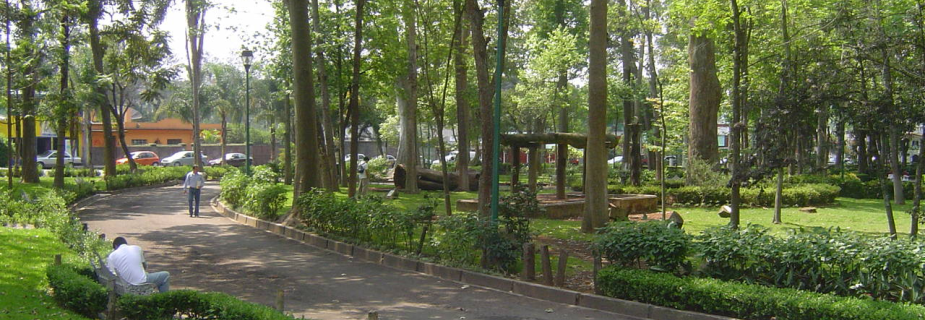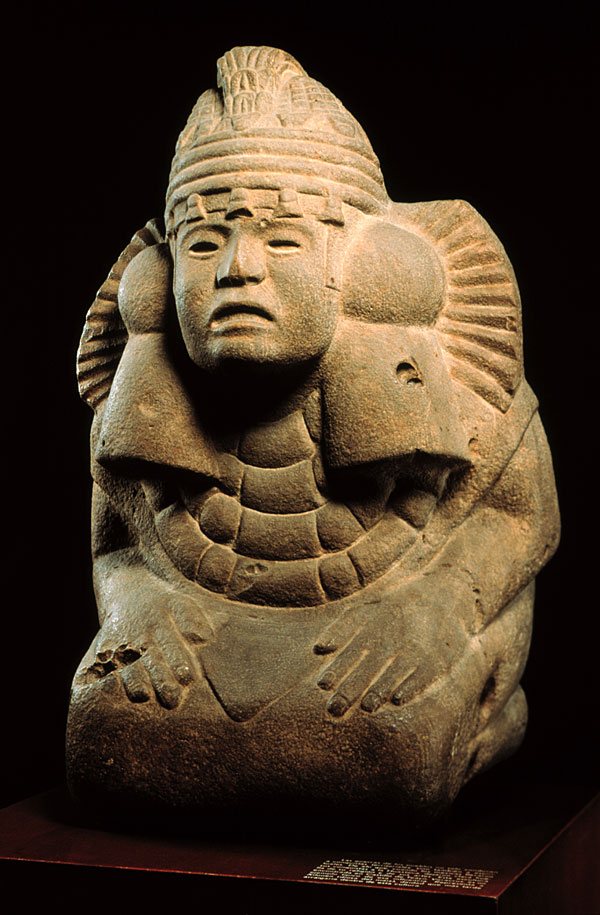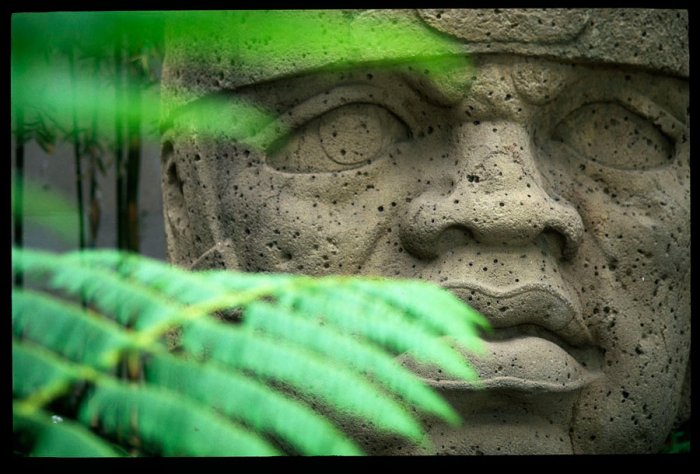. . . . I've finally gotten it straight, probably because we are on
the ground here. We are in the state of
Veracruz, in its capital, Xalapa. This
is not the port city of Veracruz, which is on the Gulf Coast, about an hour and
a half away by car. Xalapa also functions
as kind of the equivalent of the Xalapa county seat: the muncipality
government, which isn't the same as 'municiple'.
It is also the university town -- 20,000 students enrolled
in Veracruz. So government and students
are its chief economy (and agriculture!) -- very like Austin, TX. It also has three connected lakes, that to
unknowing eyes appear to be a river, as does Austin.
But this is very Spanish, as the non-indigenous settlement
began in 1519 with the arrival of Hernán Cortés, most definitely not
Tex-Mex. The city twists and winds, goes
up, and goes down along steep grades.
Only the most dedicated here bicycle.
We came from Mexico City yesterday, via the Ardos bus line's
Platinum (Platino) bus service. The
steps up to the coach, like the coach floor itself, is of polished wood. There is enormous leg room. The seats are double or single. The seats
recline. The footrests are adjustable
from high to low. The wifi is free, if
one signs in with fb, linked in or twitter.
The movies, etc. are also free, and one does not need to sign in with
anything. One can charge all ones
devices right there as well. A lunch is
provided. The coach was filled up, but
it felt otherwise, there is so much room.
Excellent, since the trip was 4 1/2 hours, of which most of it felt as
though attempt to escape Mexico City.
I read Diana Gabaldon's Voyager,
but mostly looked out the window. The
state of Veracruz is endlessly varied: volcanic mountains rising abruptly from
the plains and valleys, forests, farming of all kinds from corn (lots of corn)
to produce and fruit. Lots of horses,
cattle and even sheep. The mountains are
very high. It was like flying, one's ears were constantly stopping up and
unplugging.
We were met at the station by Patriciá (how she pronounces
it), a student who first studied architecture, graduated and started law
school, and now is in the arts. She
decided she wanted art, not law, not architecture. She's smart and nice, and our faciliator.
We're staying in the lovely and well-located Clara Luna
Hotel, which has been refurbished and renovated to hark back to its heyday --
Mexico, the Caribbean's and South American's heyday, the 1930's and
1940's. This was the musicians' hotel
back then, so there is a lot of that sort of memorabilia but its integrated
into the decor and furnishings, not something to look at. Out room is huge and the bed is very
comfortable. This is good as we need to
sleep a lot because we are still quite high above sea level, and our sea level
systems are not used to this, particularly with all the going long stretches
down steep grades and up steep grades.
The food is as wonderful as expected.
 |
| Luis Mario Moncada |
And, now the most important thing. We have been to a rehearsal of The American
Slave Coast with the director, Luis Mario Moncada, who is Mexico's most respected adapter of
English into Spanish language productions, as well as her most famous
director. His theater group is the
oldest in modern Mexico, founded back in the 19th century. He's on the faculty here, and the theater
group's home is here, when not on tour.
 |
| Part of this morning's university's route to the rehearsal. |
It is wonderful what they have done with Slave Coast. We couldn't be more pleased and TASC couldn't
be better served. The actress who reads the letter from enslaved Virginia Boyd to the slave trader who is sending her and her pregnancy to Texas to be sold does it (in Spanish) with grace, pathos and just tears the heart out of one's body.
Everyone is so nice to us!
It's embarrassing as we're aware at all times of how intensely mean,
nasty and contemptuously the USA is treating Mexico and Mexicans. Paul Krugman gave a lecture in Mexico City
the night we arrived (that was only Wednesday, two days ago!), which, hugely
attended, got written up in all the media.
The gist, that all the newspapers (real newspapers and books are
everywhere visible in Mexico!) stressed, of what Krugman said was -- very
roughly translated:
The system of the US was designed
by men who assumed that it would only be in the charge of sane men. If someone was elected who turned out to be
mad or a criminal, he would be impeached.
Thus the system would survive.
However, the system cannot survive a madman when all the powers of
wealth and politics are being served by the madman.
After the rehearsal, and then lunch (4:30 PM, was lunch) Ned
and I went back to what is one of the main shopping districts. He bought and Italian suit for less than $300
in US money. This morning we got the news a check is waiting for us
back in the US, the last installment of our share of the profit for investing
in the items from Morocco that DH brought back last year. So a suit, that is altered in the shop for trouser length, etc. for less than $300 -- and gorgeous – El V looks so good
in it! -- seems about right.
El V would never have gotten it though, if I wasn't with
him. He picked out trousers first, that
I thought were not of the quality he should be getting. The young sales person was terrific, he kept
bringing jackets. I’d say the jacket,
though very nice, its fabric didn’t harmonize with the fabric of the
pants. In the end we got a suit!
About damned time!
I'm skipping the music tonight. Lunch was so late, I doubt I'll be hungry for
dinner, which comes after the music, which will be around 10 PM, but maybe I'll
join them. This is all so Spanish -- and different from Cuba, Puerto Rico, the DR, or the French Caribbean or even New Mexico. But it isn't Spanish either, not quite -- it's Mexican, and one can see and feel it, though the differences are
subtle and I haven't been here long enough to understand in any kind of detail.
I'm fortunate and privileged to
have this experience, even as difficult as the last few days of getting ready
and traveling have been. For people with our infirmities mixed into the TSA regs and the airlines' determination to make it as ugly for the average person as possible, and then the wreckage of urban sprawl and traffic to get to and out of the airports, it is increasingly difficult but we're always treated so well
when we arrive, and we learn and experience so much.
I'm still running at least 24 hours behind, in attempting to process and remember everything since arriving in Mexico. It's a lot -- for one thing, it just suffered a terrible earthquake, and I don't forget that. Here in Xalapa, they had weeks and weeks of rain and flooding -- then a hurricane.
This end of summer has been awful for so many. Hopefully things finally may settle some for a while -- at least weather-wise . . . .



































